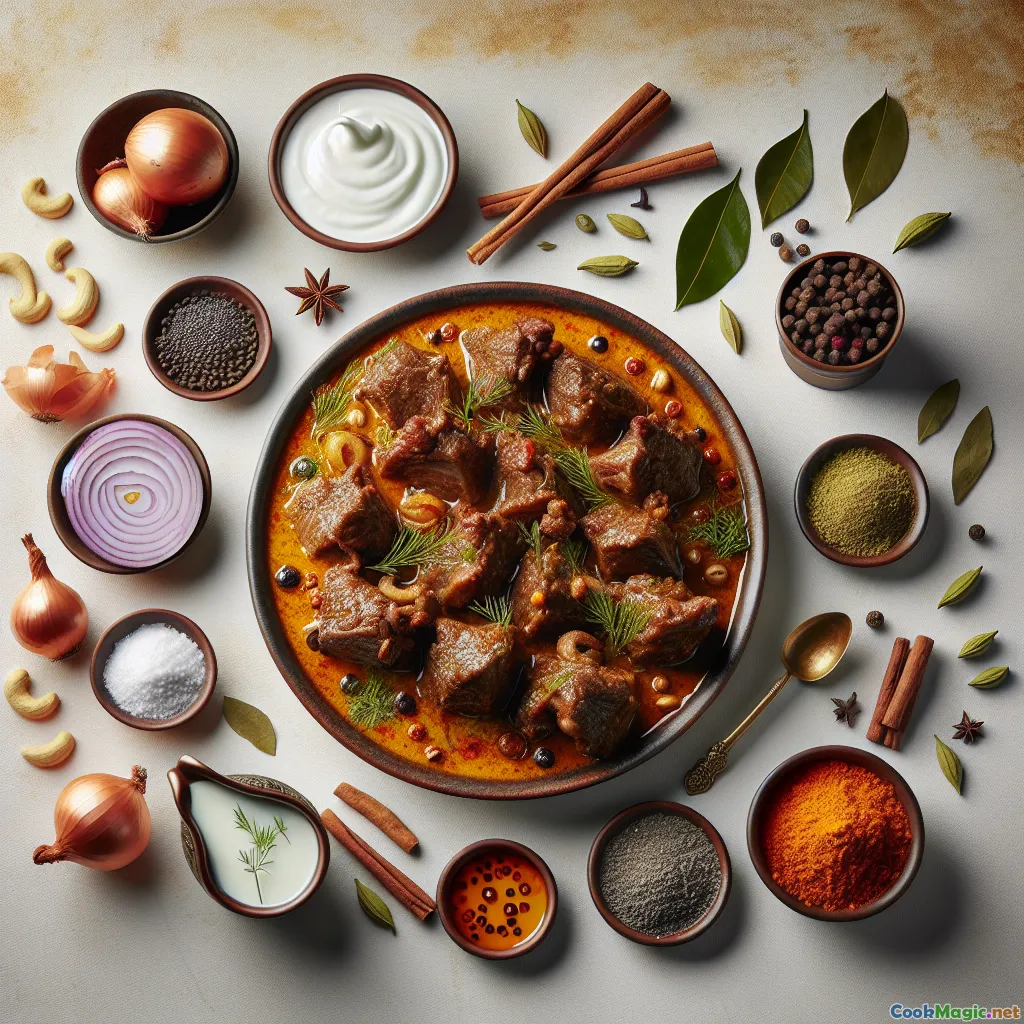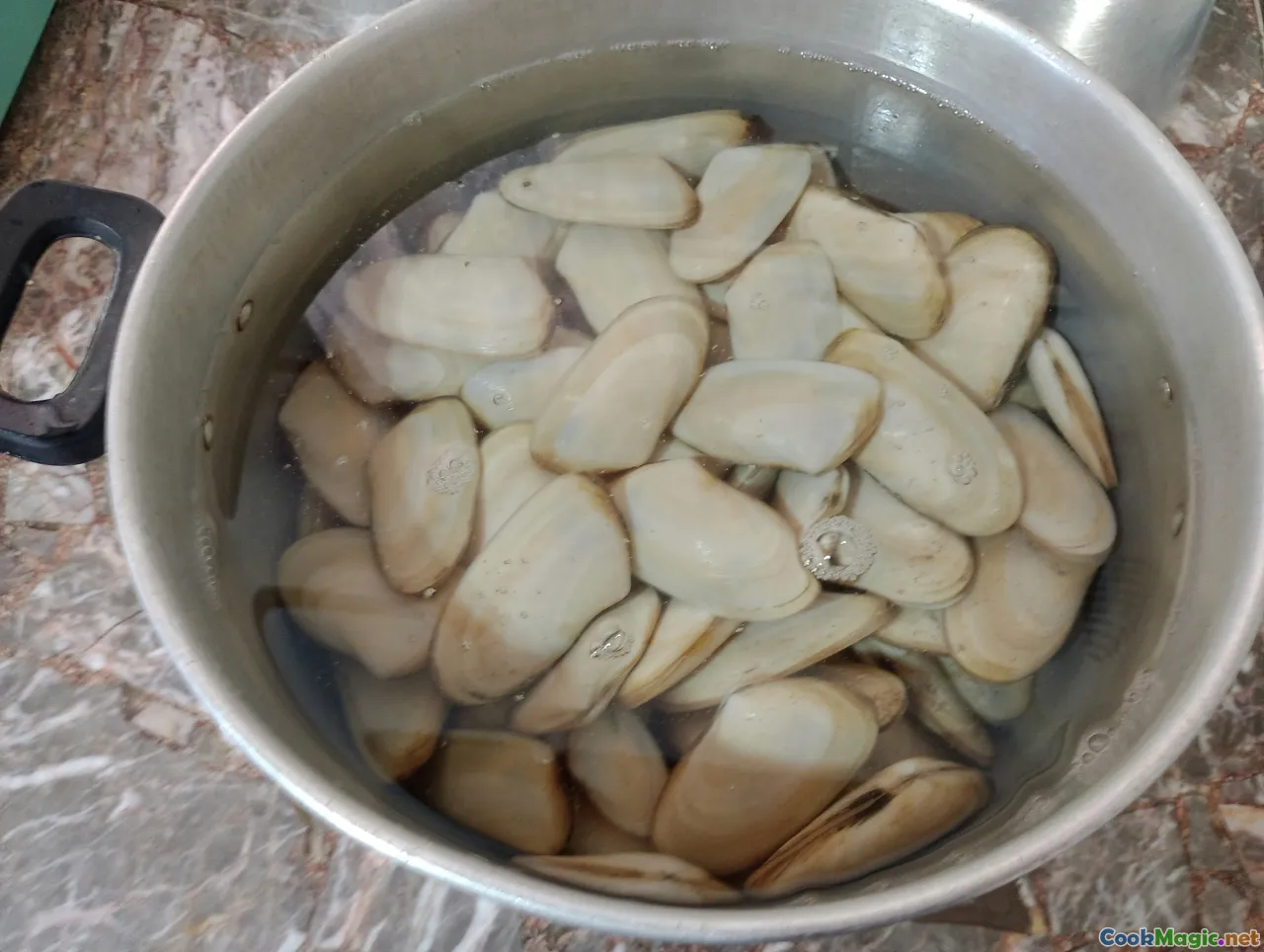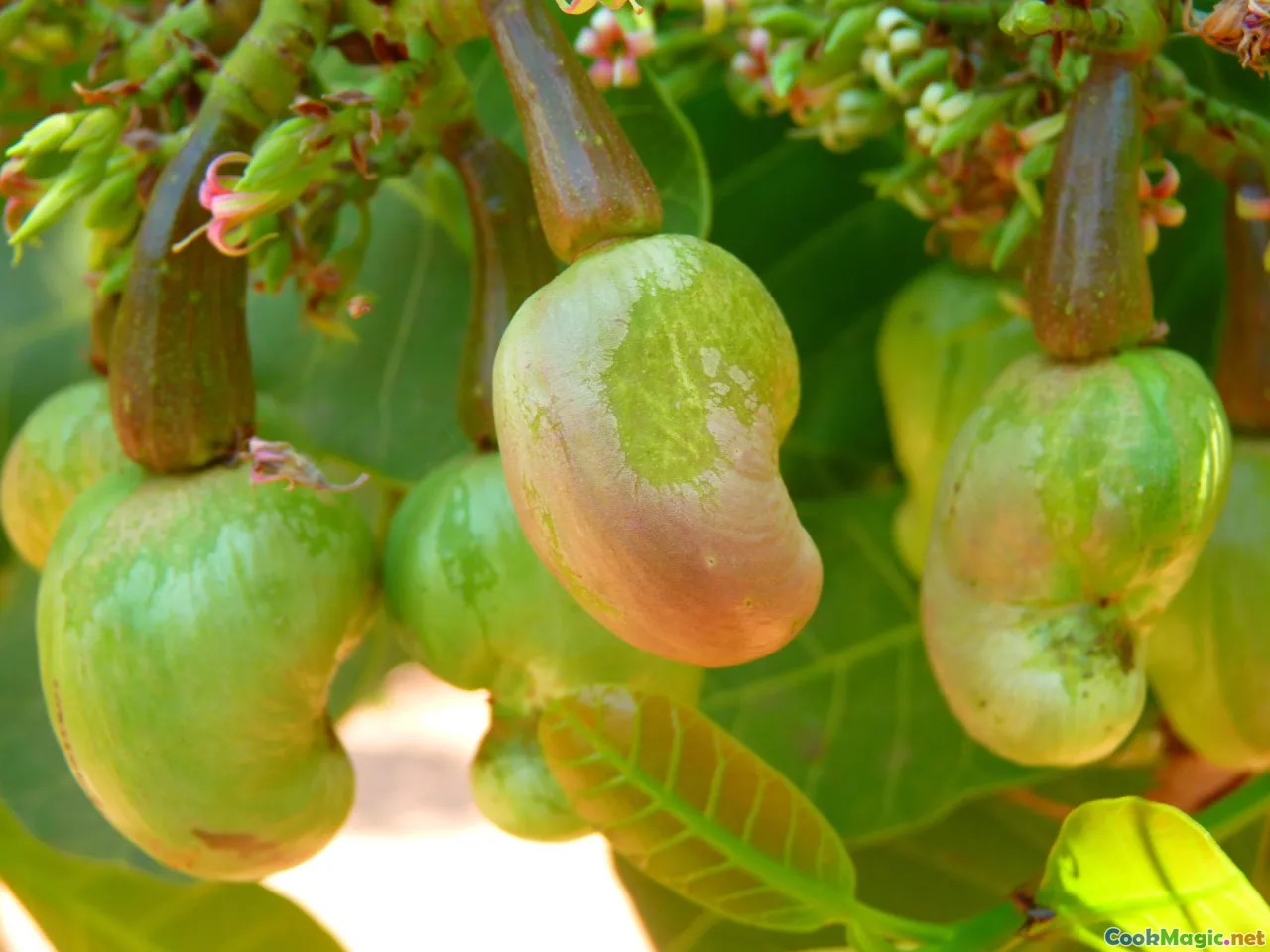
皇家拉贾斯坦白羊肉咖喱揭幕
(Royal Rajasthani White Mutton Curry Unveiled)
(0 评论)食材
-
600 grams 羊肉(带骨)
(请切成中等大小的块;如有可能,请选用有机食材。)
-
2 medium 洋葱酱
(白洋葱为佳,细致打成泥状。)
-
60 grams 腰果
(浸泡并研磨至成细滑的糊状。)
-
20 grams 罂粟籽
(浸泡并研磨,在皇家肉汁中被大量使用。)
-
120 grams 新鲜酸奶
(全脂鲜奶油,打发充分。)
-
3 tbsp 酥油(澄清黄油)
(正宗的风味;可以用油替代1汤匙。)
-
4 pieces 青豆蔻荚
-
3 pieces 丁香
-
1 inch piece 肉桂棒
-
6 pieces 黑胡椒粒
-
1 piece 月桂叶
-
2 tbsp 姜蒜酱
(新鲜,最好是自制的。)
-
100 ml 牛奶
(增添奶油般的顺滑感。)
-
1 tsp 白胡椒粉
(加热时不着色。)
-
1 pinch 肉豆蔻
(新鲜磨碎,可选但推荐。)
-
1 tsp 克维拉水
(为了获得芳香的花香风味,玫瑰水可以替代。)
盐, to taste
-
2 tbsp 鲜奶油
(为了最后的点缀。)
-
2 sheets 银叶(varq)
(用于皇家点缀。如无可用材料,请省略。)
-
1 tbsp 新鲜香菜叶
(细切,用于装饰。)
(请切成中等大小的块;如有可能,请选用有机食材。)
(白洋葱为佳,细致打成泥状。)
(浸泡并研磨至成细滑的糊状。)
(浸泡并研磨,在皇家肉汁中被大量使用。)
(全脂鲜奶油,打发充分。)
(正宗的风味;可以用油替代1汤匙。)
(新鲜,最好是自制的。)
(增添奶油般的顺滑感。)
(加热时不着色。)
(新鲜磨碎,可选但推荐。)
(为了获得芳香的花香风味,玫瑰水可以替代。)
(为了最后的点缀。)
(用于皇家点缀。如无可用材料,请省略。)
(细切,用于装饰。)
营养
- 份量: 4
- 每份大小: 1 碗 (250克)
- Calories: 550 kcal
- Carbohydrates: 21 g
- Protein: 32 g
- Fat: 37 g
- Fiber: 2.5 g
- Sugar: 6 g
- Sodium: 740 mg
- Cholesterol: 110 mg
- Calcium: 140 mg
- Iron: 3.2 mg
制作步骤
-
1 - 清洗并准备羊肉:
将羊肉块洗净并彻底擦干。放在一旁。开始在温水中浸泡罂粟籽和腰果,以形成糊状物。
-
2 - 混合酱料:
将浸泡过的腰果和罂粟籽研成顺滑的糊状物,如有需要可稍微加一点水。另请将白洋葱打成泥。
-
3 - 炒香整粒香料:
在厚锅中加热酥油。加入小豆蔻、丁香、肉桂、黑胡椒和月桂叶。让它们发出嘶嘶声,直到香气四溢。
-
4 - 洋葱酸奶混合物:
加入洋葱膏,小火慢煮,直到香气变得柔和,混合物变得半透明。加入姜蒜膏,略微煎至微金黄。加入酸奶,转小火继续煮,直到油分离。
-
5 - 将羊肉煎至上色并封存:
把羊肉块放入平底锅,用大火快煎几分钟,直到四周都变成棕色。
-
6 - 加入坚果酱和调味料:
将腰果和罂粟籽的糊状混合物加入,加入盐、白胡椒,以及一点肉豆蔻。让所有材料在小火下混合5–6分钟。
-
7 - 小火慢炖,至臻完美:
倒入牛奶和约1.5杯水。盖上锅盖,用小火煮50–60分钟,直到羊肉变得软嫩,酱汁变得浓稠。
-
8 - 最后的修饰:
关火。加入鲜奶油,轻轻拌入 kewra 水以增香。尝尝盐味。
-
9 - 装饰与上菜:
用汤勺舀入上菜盘,铺上闪亮的银箔薄片,撒上切碎的香菜。趁热享用,搭配 Sheermal 烤饼或香米饭。
将羊肉块洗净并彻底擦干。放在一旁。开始在温水中浸泡罂粟籽和腰果,以形成糊状物。
将浸泡过的腰果和罂粟籽研成顺滑的糊状物,如有需要可稍微加一点水。另请将白洋葱打成泥。
在厚锅中加热酥油。加入小豆蔻、丁香、肉桂、黑胡椒和月桂叶。让它们发出嘶嘶声,直到香气四溢。
加入洋葱膏,小火慢煮,直到香气变得柔和,混合物变得半透明。加入姜蒜膏,略微煎至微金黄。加入酸奶,转小火继续煮,直到油分离。
把羊肉块放入平底锅,用大火快煎几分钟,直到四周都变成棕色。
将腰果和罂粟籽的糊状混合物加入,加入盐、白胡椒,以及一点肉豆蔻。让所有材料在小火下混合5–6分钟。
倒入牛奶和约1.5杯水。盖上锅盖,用小火煮50–60分钟,直到羊肉变得软嫩,酱汁变得浓稠。
关火。加入鲜奶油,轻轻拌入 kewra 水以增香。尝尝盐味。
用汤勺舀入上菜盘,铺上闪亮的银箔薄片,撒上切碎的香菜。趁热享用,搭配 Sheermal 烤饼或香米饭。
关于 皇家拉贾斯坦白羊肉咖喱揭幕 :的更多信息
Safed Maas Sheherwali Style: A Regal Heritage on Every Plate
Introduction & History
Safed Maas Sheherwali Style is not simply a dish; it epitomizes the confluence of Rajasthani royalty and unique Sheherwali Jain cultural influences that thrived in Murshidabad—once Bengal's seat of power and multicultural splendor. Traditionally, 'Safed Maas' in Rajasthan signifies a mutton curry solely bathed in white gravies, eschewing red chilies and vibrant spice blends for slivers of subtlety and aromatics. The Sheherwali community, celebrated for their mercantile nous and discerning finesse, reflected their regal opulence in banquets interwoven with Mughal and Marwari essence.
What Sets Sheherwali Safed Maas Apart?
This rendition’s reverent homage to timeless princely kitchens lies in its orchestral balance: a medley of nuts—cashew and poppy seed paste—enrich the velvety gravy, harmonizing with mellow yogurt, floral spices, and an occasional kiss of rose. Unlike the fiery red gravies, this one seeks a gentle elegance, letting the tender mutton and creamy sauce sing. What truly distinguishes the Sheherwali style is:
- Refusal to use regular red chili, turmeric, or harsh garam masala.
- Joyous embrace of mild white pepper, aromatics, nuts, and flower essences.
- Frequent use of a touch of floral (often kewra or rose) water for fragrant finish.
- Optional application of shimmering silver leaf (‘varq’) for special feasts.
Cooking Secrets, Tips, & Personal Notes
Meat Selection: How the mutton is cut matters. Choose pieces with bone—the slow, hour-long simmer is what yields a gravy bursting with flavor and the supremely tender characteristic of no-nonsense regal curries.
Cashew-Poppy Paste: Ensure both nuts and seeds are soaked for at least half an hour to ensure smoothest grinding. A fine, velvety paste prevents grittiness in that prized white gravy.
The Aromatic Difference: Frying whole spices in ghee initiates the dish’s symphony. Control the flame and sauté aromatics gently to repel bitterness from onions and garlic.
Milk & Yogurt Marriage: To master a shamelessly lush yet subtle sauce, you must balance milk and yogurt, whisking slowly into the base to avoid curdling.
Garnishing with Class: For formal occasions, delicate sheets of edible silver leaf leave a striking impression and hint at the aristocratic table.
Accompaniments: Sheherwali Safed Maas is customarily enjoyed with sheermal (sweet saffron flatbread), soft naans, or plain fragrant basmati. When seeking contrast, jeera rice punctuates the meal’s richness.
If you crave a vegetarian tweak, simply substitute paneer chunks or boiled potatoes and use the core technique.
Cultural Significance
Though Sheherwali cuisine for the most part follows Jain vegetarian laws, at grand social functions or interactions with the Rajasthani nobility, such royal celebratory non-veg dishes were nuanced for a gentle, extravagant palate. Carefully balanced spices and an absence of overbearance honor ancient codes of hospitality, appeasing both privilege and probity. They stand as a testament to the meld of Jain thought, royal opulence, and Mughal artistry.
Final Musings & Aspects
If you seek to wow guests with an unforgettable feast in a velvet white, this dish will become a party centerpiece. It’s a paean to delicate flavors over unrestrained heat. Its silken texture—lavished with nuts and milk—soothes, yet leaves a savory trailing note, gently coaxed upward by keora’s floral finish.
For best results:
- commit to slow-cooking;
- be gentle when adding milk or yogurt;
- don’t skip the little musk of nutmeg or the sweet floral note at the end.
Whether for a winter gathering or a festive thali, Safed Maas Sheherwali Style will transport your table across time, drawing every guest into a world where flavor, refinement, and festivity reign.























